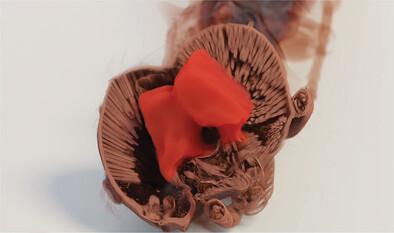Automated segmentation of insect anatomy from micro‐CT images using deep learning
IF 3.1
Q2 MULTIDISCIPLINARY SCIENCES
引用次数: 0
Abstract
Abstract Three‐dimensional (3D) imaging, such as microcomputed tomography (micro‐CT), is increasingly being used by organismal biologists for precise and comprehensive anatomical characterization. However, the segmentation of anatomical structures remains a bottleneck in research, often requiring tedious manual work. Here, we propose a pipeline for the fully automated segmentation of anatomical structures in micro‐CT images utilizing state‐of‐the‐art deep learning methods, selecting the ant brain as a test case. We implemented the U‐Net architecture for two‐dimensional (2D) image segmentation for our convolutional neural network (CNN), combined with pixel‐island detection. For training and validation of the network, we assembled a data set of semimanually segmented brain images of 76 ant species. The trained network predicted the brain area in ant images fast and accurately; its performance tested on validation sets showed good agreement between the prediction and the target, scoring 80% Intersection over Union (IoU) and 90% Dice Coefficient (F1) accuracy. While manual segmentation usually takes many hours for each brain, the trained network takes only a few minutes. Furthermore, our network is generalizable for segmenting the whole neural system in full‐body scans, and works in tests on distantly related and morphologically divergent insects (e.g., fruit flies). The latter suggests that methods like the one presented here generally apply across diverse taxa. Our method makes the construction of segmented maps and the morphological quantification of different species more efficient and scalable to large data sets, a step toward a big data approach to organismal anatomy. Key points Development of a deep learning‐based pipeline for the fully automated segmentation of micro‐CT images of insects, using ant brains as a starting point. Creation of an open access data set of micro‐CT images of ant heads for training and testing. Generalizable computer vision methodology, extendable across diverse taxa and anatomical features.

利用深度学习从微CT图像中自动分割昆虫解剖结构
三维(3D)成像,如微计算机断层扫描(micro - CT),越来越多地被生物生物学家用于精确和全面的解剖表征。然而,解剖结构的分割仍然是研究的瓶颈,往往需要繁琐的手工工作。在这里,我们提出了一个利用最先进的深度学习方法对微CT图像中的解剖结构进行全自动分割的管道,并选择蚂蚁大脑作为测试案例。我们为卷积神经网络(CNN)实现了二维(2D)图像分割的U - Net架构,并结合了像素岛检测。为了训练和验证网络,我们收集了76种蚂蚁的半分割脑图像数据集。训练后的网络能够快速准确地预测蚂蚁图像中的脑区;在验证集上的性能测试表明,预测与目标之间的一致性很好,达到80%的交集超过联合(IoU)和90%的骰子系数(F1)准确率。人工分割每个大脑通常需要花费数小时,而训练后的网络只需要几分钟。此外,我们的网络可用于在全身扫描中分割整个神经系统,并可用于对远亲和形态不同的昆虫(例如果蝇)的测试。后者表明,像这里提出的方法一般适用于不同的分类群。我们的方法使不同物种的分割图和形态量化的构建更加高效,并且可扩展到大型数据集,这是迈向生物解剖学大数据方法的一步。开发基于深度学习的管道,以蚂蚁大脑为起点,实现昆虫微CT图像的全自动分割。创建用于训练和测试的蚂蚁头部微CT图像的开放访问数据集。可扩展的计算机视觉方法,可扩展到不同的分类群和解剖特征。
本文章由计算机程序翻译,如有差异,请以英文原文为准。
求助全文
约1分钟内获得全文
求助全文

 求助内容:
求助内容: 应助结果提醒方式:
应助结果提醒方式:


